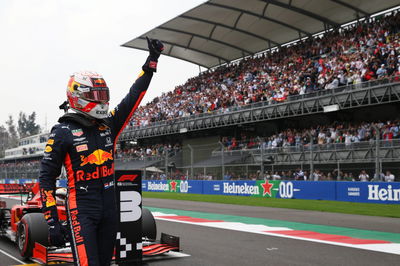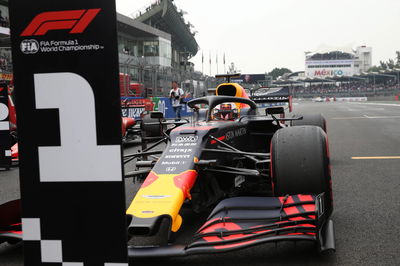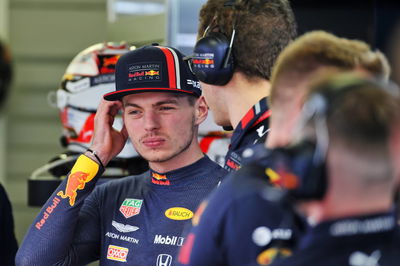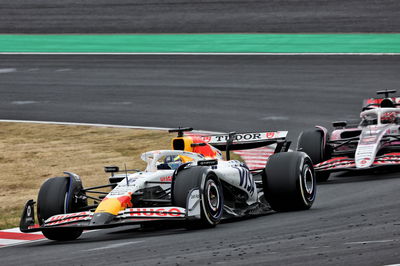F1 Qualifying Analysis: Verstappen’s bravado proves costly
Max Verstappen has a habit of losing pole position in Mexico by tiny, tiny margins.
In 2017, it was 0.086 seconds. In 2018, it was 0.026 seconds.
And this time around, it was the result of eight words.
Eight words uttered that fit in with Verstappen’s non-plussed, perhaps even brash attitude that often comes with being a precocious young star, far beyond his years, having attained a level of success before unknown at his age in this sport.
But this time around, such an attitude proved extremely costly.

Max Verstappen has a habit of losing pole position in Mexico by tiny, tiny margins.
In 2017, it was 0.086 seconds. In 2018, it was 0.026 seconds.
And this time around, it was the result of eight words.
Eight words uttered that fit in with Verstappen’s non-plussed, perhaps even brash attitude that often comes with being a precocious young star, far beyond his years, having attained a level of success before unknown at his age in this sport.
But this time around, such an attitude proved extremely costly.
The hefty crash for Valtteri Bottas at the end of Q3 in Mexico looked set to bring the session to a halt, but no red flag was shown. Instead, local yellows were waved at Peraltada, affording drivers the opportunity to cross the line and still set a lap.
The rules dictate that drivers must back off when coming across yellow flags. It is what Sebastian Vettel did, giving up his chance to improve on third. Leclerc also failed to improve on his final lap. But Verstappen did find time – even if it was just a tenth, meaning his first lap had been good enough for pole anyway – putting himself in the spotlight.
With hindsight, the sensible thing to have done would have been to bat away questions about whether or not he lifted, instead acknowledging the importance of the yellow flag. But there was no coherence to Red Bull’s response.
Team boss Christian Horner initially denied there had been a yellow flag at all, meaning there was no reason for Verstappen to lift – only for the TV footage to clearly show a yellow flag being waved on the left-hand side of the track as Verstappen came through the corner.
Verstappen himself was blasé about the matter when asked if he lifted, leading to the eight words that ultimately cost him pole.
“Didn’t really look like it, did it? No."
Verstappen stuck with his ‘don’t care’ attitude later in the press conference. “I think we know what we are doing, otherwise we wouldn’t be driving an F1 car,” Verstappen said. “It’s qualifying, you go for it, but like if they want to delete the lap, then delete the lap.” If only they had, Max. If only...
With that line of thinking, there would be no need for any sporting rules whatsoever – because the drivers know what they are doing.
But rules are in place not only to keep racing fair, but, more importantly, to maintain safety levels. And in this of all years, following the tragic passing of Anthoine Hubert at Spa, there needs to be greater respect and acknowledgement of the rules in place.
Verstappen’s apparent disregard for this was only made all the starker by the response given by Vettel when asked on German TV where he could have qualified without lifting.
“That is irrelevant,” Vettel said. “Valtteri crashed in the wall, and then the priority was to lift.”
Vettel's ability to ease off was instrumental to the stewards' decision to hit Verstappen with a three-place grid penalty, stripping him of pole and dropping him back to P4 on the grid. Verstappen's demise paved the way for Ferrari to lock out the front row of the grid - perhaps the expected result in highly unexpected circumstances.

All of the post-qualifying hoo-ha detracted from what was otherwise a stunning qualifying display from Verstappen, overcoming the straight-line advantage of the Ferraris that he had deemed insurmountable less than 24 hours earlier.
“I don't think in qualifying we can fight with them,” Verstappen said after FP2. “They are just too quick. The rest is all pretty much in the same speed range, but they are just miles ahead. But that's how it is at the moment.”
Ferrari’s straight-line speed stood out once again in qualifying. Vettel and Leclerc were first and second at all four points where top speed is measured, with Vettel going as much as 10 km/h faster than Verstappen through the speed trap (357.9 km/h to 347.8 km/h). Even on the run from the final corner to the finish line, the Ferraris were able to build a 3 km/h advantage. The grunt of the Ferrari engine that remains so curious to many showed few signs of disappearing.
But Verstappen hooked up the rest of the lap where it mattered to claw back the deficit. He was fastest of anyone through Sector 2 and Sector 3, gaining more than two-tenths on Vettel in the short final sector alone. The RB15 remains a very, very strong chassis.
The long, long run to Turn 1 left Verstappen doubtful of his chances of retaining the lead given Ferrari’s straight-line speed, but the Dutchman talked up the race-trim potential of his car.
“We have a good race car anyway, so even if something happens at the start and we lose position, I think we are still fine,” Verstappen said on the grid prior to his meeting with the stewards.
Alas, it wasn’t the start where Verstappen lost ground, but in the post-qualifying press conference. And even if he can fight back to claim a third straight Mexico win on Sunday, one would hope he can learn from this episode – for if not, there will be repeats down the line.











